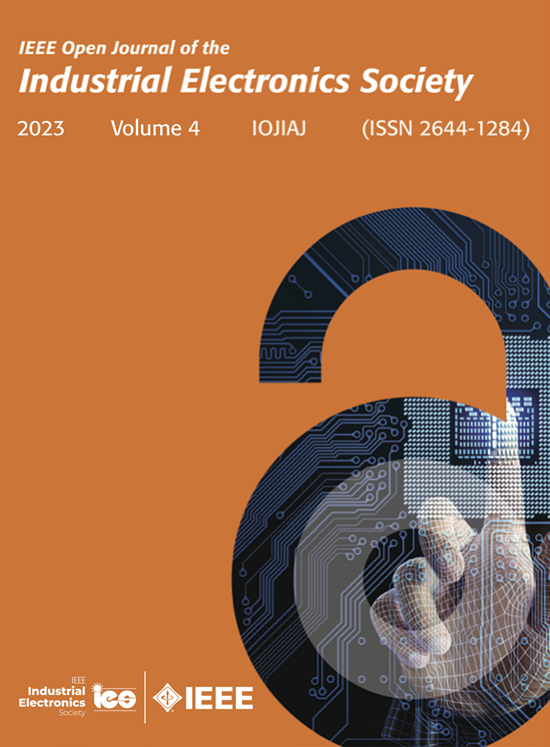Identification and Evaluation of Pitfalls in the Migration From IEC 61131-3 to IEC 61499: A Review
IF 4.3
Q1 ENGINEERING, ELECTRICAL & ELECTRONIC
IEEE Open Journal of the Industrial Electronics Society
Pub Date : 2025-04-07
DOI:10.1109/OJIES.2025.3558685
引用次数: 0
Abstract
The IEC 61131-3 standard was initially established to define a common software architecture and programming languages for programmable logic controllers (PLCs) produced by various manufacturers, leading to its widespread adoption since 1993. Since then, it has been a cornerstone in the industrial automation domain. Building upon this foundation, the IEC 61499 standard was developed to enhance the design and implementation of distributed control systems by incorporating advanced concepts from distributed systems and software engineering such as encapsulation, separation of control logic from communication infrastructure, and independent development of software components from their hardware deployment. While IEC 61499 introduces novel approaches, it also incorporates and extends key elements from IEC 61131-3, including function blocks, programming languages, and basic data types. Despite the advantages offered by the IEC 61499 standard, its adoption is still limited largely due to historical precedence, industry familiarity, better tool and vendor support, and the risk-averse nature of the industrial automation market. The migration or re-engineering effort from an existing IEC 61131-based automation system to IEC 61499 also faces challenges because it typically retains the underlying programming paradigms of IEC 61131-3. The contribution of this article is to identify the pitfalls associated with migrating PLC control code from IEC 61131-3-based automation systems to IEC 61499. For this purpose, we conducted a systematic literature review that address these identified migration pitfalls. We then synthesized the findings from the literature and provided a summary and research directions for addressing these pitfalls.从IEC 61131-3到IEC 61499迁移过程中缺陷的识别和评估:综述
IEC 61131-3标准最初是为了定义各种制造商生产的可编程逻辑控制器(plc)的通用软件架构和编程语言而建立的,导致其自1993年以来被广泛采用。从那时起,它一直是工业自动化领域的基石。在此基础上,IEC 61499标准的开发是为了增强分布式控制系统的设计和实现,通过结合分布式系统和软件工程的先进概念,如封装,控制逻辑与通信基础设施的分离,以及软件组件与硬件部署的独立开发。虽然IEC 61499引入了新颖的方法,但它还合并并扩展了IEC 61131-3中的关键元素,包括功能块、编程语言和基本数据类型。尽管IEC 61499标准提供了诸多优势,但其采用仍然受到限制,这主要是由于历史上的优先级、行业熟悉度、更好的工具和供应商支持,以及工业自动化市场的规避风险性质。从现有的基于IEC 61131的自动化系统迁移或重新设计工作到IEC 61499也面临挑战,因为它通常保留IEC 61131-3的底层编程范例。本文的贡献是识别与将PLC控制代码从基于IEC 61131-3的自动化系统迁移到IEC 61499相关的陷阱。为此,我们进行了系统的文献回顾,以解决这些已确定的迁移陷阱。然后,我们综合了文献中的发现,并为解决这些缺陷提供了总结和研究方向。
本文章由计算机程序翻译,如有差异,请以英文原文为准。
求助全文
约1分钟内获得全文
求助全文
来源期刊

IEEE Open Journal of the Industrial Electronics Society
ENGINEERING, ELECTRICAL & ELECTRONIC-
CiteScore
10.80
自引率
2.40%
发文量
33
审稿时长
12 weeks
期刊介绍:
The IEEE Open Journal of the Industrial Electronics Society is dedicated to advancing information-intensive, knowledge-based automation, and digitalization, aiming to enhance various industrial and infrastructural ecosystems including energy, mobility, health, and home/building infrastructure. Encompassing a range of techniques leveraging data and information acquisition, analysis, manipulation, and distribution, the journal strives to achieve greater flexibility, efficiency, effectiveness, reliability, and security within digitalized and networked environments.
Our scope provides a platform for discourse and dissemination of the latest developments in numerous research and innovation areas. These include electrical components and systems, smart grids, industrial cyber-physical systems, motion control, robotics and mechatronics, sensors and actuators, factory and building communication and automation, industrial digitalization, flexible and reconfigurable manufacturing, assistant systems, industrial applications of artificial intelligence and data science, as well as the implementation of machine learning, artificial neural networks, and fuzzy logic. Additionally, we explore human factors in digitalized and networked ecosystems. Join us in exploring and shaping the future of industrial electronics and digitalization.
 求助内容:
求助内容: 应助结果提醒方式:
应助结果提醒方式:


